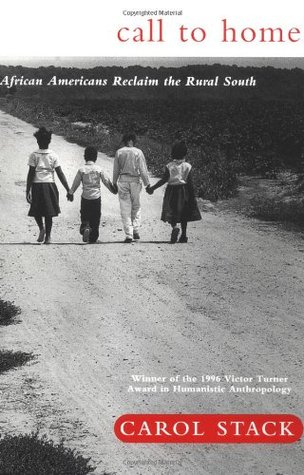Black migration from the rural South to the cities of the North is an important chapter in 20th-century American history. What began as a steady trickle developed into a flood as blacks left the land in response to the promises of the factory. The decade of the I920’s alone saw nearly 250,000 blacks make the journey North in search of a better life. Life in the factory and the city, it turns out, was not better. And now the historic migration is being reversed.
Call to Home: African Americans Reclaim the Rural South is the first book to my knowledge that studies the reverse migration of blacks from the cities of the North to the Southern countryside. According to Stack, in the last ten years the number of blacks returning to the South was 50 percent higher than the number of those choosing to leave. Interestingly, their destinations are often still predominately agricultural and among the poorest in the nation, areas the Department of Agriculture calls “persistent poverty counties.”
Stack points to a number of factors leading to the reverse migration: these include aging parents, the management of family property, idealism, and factory closures in the North. Personal interviews, which comprise the majority of research for the book, conducted by her in the Carolinas give the work a distinct flavor as each returnee tells his unique story. But despite the sundry reasons for returning, a common theme is clear—the destructive effects of industrialism and urbanization on a historically rural population.
On page after page, black men and women express frustration with the constant fears and degradation of city life. Stack writes that many “had expected to find luxury, people rich beyond belief, beautiful buildings,” but instead found “ghetto, street gangs, garbage piled up, dilapidation all around.” The black migrants who had grown up in the countryside with its open spaces and relative safety were pained that their children could not even venture outside in the city to play. According to Stack, the urban dangers caused a number of blacks working in the North to send their children back to the South to be raised by friends and relatives. The book also contains descriptions of the heroic struggles of the black farmers who remained in Carolina and fought to retain control of their land. Stack tells the story of one man who committed suicide rather than face the costs of hospitalization and the risks of mortgaging his property to pay medical bills. Another willed his daughter ten acres of land with the single stipulation that she could never sell it. Such a respect and love for the land is heartening.
Unfortunately, Stack, like many of the blacks she interviewed, interprets the desire to live on the land and maintain ownership as a reaction against “land hungry white people.” It does not occur to Stack that the black farmers’ attitudes toward the land are identical to those of whites, while white farmers share the same fear of mortgages and banks. Such are the results of the bitter experiences of agrarian communities in the rural South—they are part of the agrarian habit of mind. But Stack, who clearly has never experienced the luxuries of life in a Bronx tenement or work in a sweatshop, despite the words of the blacks interviewed, considers all claims for the benefits of the countryside to be “nonsensical.”
Were Stack more open to agrarian thought, she would see that the reverse migration that she finds so surprising is no surprise at all. For instance, in his contribution to I’ll Take My Stand, Robert Penn Warren predicted that Southern blacks were making a mistake by putting their faith in the urban industrialism of the North. Southern blacks. Warren wrote, had always been creatures “of the small town and farm,” and agriculture was the “readiest and probably surest way” for blacks to establish themselves economically and socially.
Stack calls attention to a phenomenon that deserves further study. Unfortunately, she spends too much time inveighing against Southern racism and racial antagonism instead of examining the conflict between industrial and agrarian values, to which she appears oblivious throughout her book.
[Call to Home: African Americans Reclaim the Rural South, by Carol Stack (New York: Basic Books) 226 pp., $21.00]

Leave a Reply